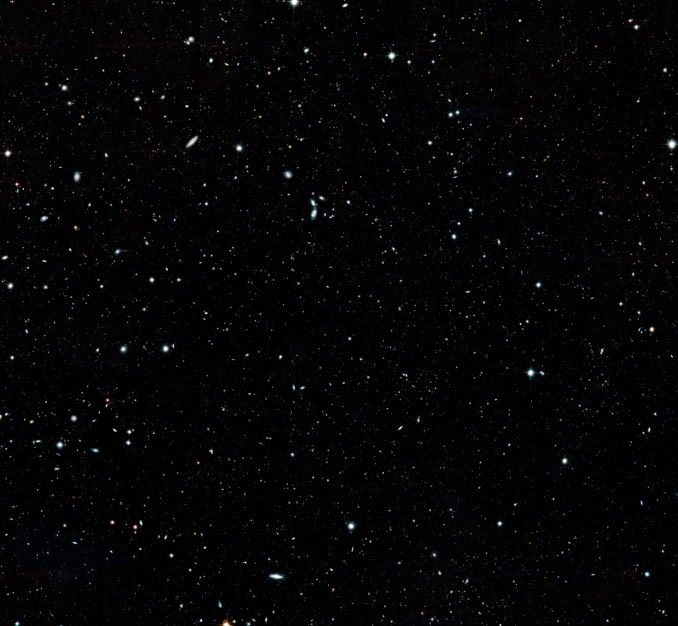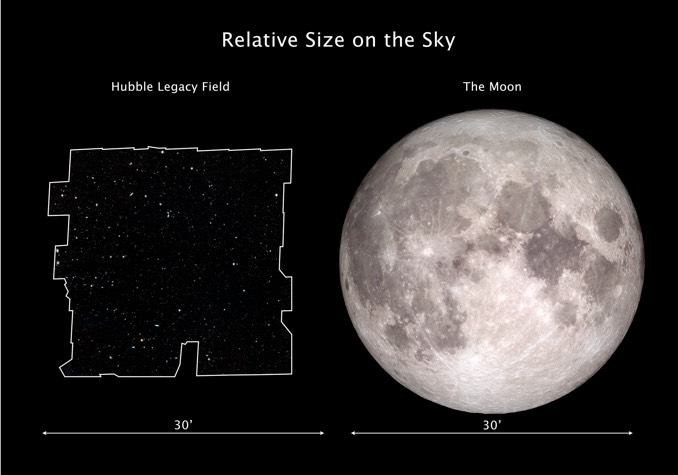In 1995, astronomers aimed the Hubble Space Telescope at a presumably empty patch in the northern sky and effectively opened the shutter for what amounted to a million-second exposure. The result was the first now-famous Hubble Deep Field, an mind boggling image showing some 3,000 galaxies, a cosmic core sample extending back to nearly the dawn of the universe. In the years since then, Hubble scientists have produced additional, more detailed deep field images using upgraded instruments.
Now, they have released a new jaw dropper that combines 7,500 Hubble exposures collected over 16 years. The Hubble Legacy Field, covering an area about the size of the full Moon, includes about 30 times as many galaxies as imaged in the earlier Hubble Ultra Deep Field, or roughly 265,000 galaxies stretching back in time and space to within about 500 million years of the Big Bang.

“Now that we have gone wider than in previous surveys, we are harvesting many more distant galaxies in the largest such dataset ever produced by Hubble,” said Garth Illingworth of the University of California, Santa Cruz, leader of the team that assembled the image. “This one image contains the full history of the growth of galaxies in the universe, from their time as ‘infants’ to when they grew into fully-fledged ‘adults.'”
He added that the Hubble Legacy Field will serve as guideposts for future telescopes.
“This will really set the stage for NASA’s planned Wide Field Infrared Survey Telescope (WFIRST),” Illingworth said. “The Legacy Field is a pathfinder for WFIRST, which will capture an image that is 100 times larger than a typical Hubble photo. In just three weeks’ worth of observations by WFIRST, astronomers will be able to assemble a field that is much deeper and more than twice as large as the Hubble Legacy Field.”

Moon Image: NASA, GSFC, and Arizona State University



